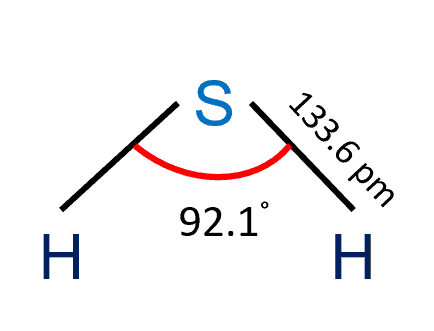Dielectric materials are basically insulators, which means that no current flows through them when a voltage is applied. However, certain changes do occur in the material at the atomic level as dielectric material becomes polarised when a voltage is applied across it.
Polarisation is an effect that slightly shifts electrons towards the positive voltage because atoms are made up of a positively charged nucleus and negatively charged electrons. This polarisation does not go far enough to cause a current flow through the material – the shift is small, but it has a significant impact, particularly when working with capacitors.
When the voltage source is removed from the material, it either recovers to its original non-polarized state or remains polarised if the substance’s molecular connections are weak.
Some examples of dielectric materials are listed below:
- Dry air
- Nitrogen
- Sulfur hexafluoride
- Porcelain (ceramic)
- Mica
- Glass
- Plastics and polymers
- Oxides of various metals
- Distilled water
Table of Contents
Dielectric Constant
The dielectric constant of a material, also known as the permittivity of a substance, describes the ability of a material to concentrate electrostatic lines of flux. In more practical terms, it indicates a material’s ability to store electrical energy in the presence of an electric field. When exposed to an electric field, all mediums, including vacuum, store energy.
The permittivity of vacuum is defined as the physical constant ε0, which is approximately ε0 = 8.854 x 10-12 farads per meter. This constant appears in many electromagnetism formulas.
The dielectric constant is affected by frequency, applied voltage, temperature, humidity, moisture, heating impact, and structure and morphology.
When exposed to intense electric fields, substances with high dielectric constants frequently degrade faster than those with low dielectric constants.
Daily Life Examples of Dielectric Material
| 1 | Capacitors | Dielectric materials are used as insulators in capacitors, which store electrical energy. |
| 2 | Electrical Wiring | The insulation around electrical wiring is often made from dielectric materials such as PVC or Teflon. |
| 3 | Microwave Ovens | The interior of a microwave oven is lined with a dielectric material, usually ceramic, which helps to reflect and direct the microwaves towards the food. |
| 4 | Computer Circuits | Dielectric materials are used as insulators in computer circuits to prevent unwanted electrical currents. |
| 5 | Solar Cells | The layers of a solar cell include dielectric materials, which help to increase the efficiency of the cell by reducing reflections and improving light transmission. |
| 6 | Safety Glasses | The lenses of safety glasses are often made from a dielectric material, such as polycarbonate, which provides impact resistance and protection from UV radiation. |
| 7 | Transformers | Dielectric materials are used as insulation in transformers, which are used to transfer electrical energy from one circuit to another. |
| 8 | Electric Motors | Dielectric materials are used as insulators in electric motors, which convert electrical energy into mechanical energy. |
| 9 | X-ray Machines | The tubes used in X-ray machines are lined with dielectric materials to prevent electrical arcing and to help shape the X-ray beam. |
Dielectric Strength
An insulator can withstand voltage up to a certain point, known as the breakdown voltage. The choice of dielectric material is crucial in applications where high voltages are predicted or dielectric thickness is very thin.
For instance, the air is an insulator under normal conditions. However, under certain conditions when the breakdown field is exceeded, it can conduct electricity as during a lightning strike. Therefore, in the case of capacitors, It is critical not to exceed a capacitor’s maximum rated voltage in order to avoid damage or even total destruction.
Dielectric loss
The term dielectric loss refers to the energy lost due to the heating of a dielectric material object when a variable voltage is applied to it. These losses occur because, as the material’s polarisation changes, the tiny electron movements can be thought of as a little alternating current flow. Different materials have different losses at different frequencies, which must be taken into account in some high-frequency applications.
Summary
A dielectric material is a type of insulator that becomes polarised when exposed to an electrical field. Even though it is not an electrical conductor, it may easily support an electrostatic field.
Exams Related Questions
| 1 | What is a dielectric material? | A dielectric material is an insulating material that does not conduct electricity easily. |
| 2 | What is the relative permittivity of a dielectric material? | The relative permittivity, or dielectric constant, is a measure of how well a dielectric material can store electric charge. |
| 3 | How is the dielectric constant related to the capacitance of a capacitor? | The capacitance of a capacitor is directly proportional to the surface area of its plates, and inversely proportional to the distance between them and the permittivity of the dielectric material between them. |
| 4 | What are some examples of common dielectric materials? | Some examples of common dielectric materials include air, paper, glass, rubber, and plastics. |
| 5 | How do dielectric materials affect the behavior of electric fields? | Dielectric materials can modify the strength and direction of electric fields, by either enhancing or reducing the fields around them. |
| 6 | What is dielectric breakdown, and how does it affect the behavior of a dielectric material? | Dielectric breakdown is the process by which a dielectric material loses its insulating properties and begins to conduct electricity. This can cause a sudden surge of electric current, which can damage the material and the surrounding components. |
| 7 | How do temperature and frequency affect the dielectric properties of materials? | The dielectric properties of materials can change with temperature and frequency. At higher temperatures, dielectric materials can become less effective at storing electric charge, while at higher frequencies, they can begin to exhibit more complex behaviors such as polarization and resonance. |
| 8 | What is the piezoelectric effect, and how does it relate to dielectric materials? | The piezoelectric effect is the ability of certain materials, including some dielectrics, to generate an electric charge in response to mechanical stress or deformation. This effect is used in a variety of applications, including sensors and actuators. |
| 9 | What is dielectric spectroscopy, and how is it used to study the properties of materials? | Dielectric spectroscopy is a technique used to study the electrical properties of materials, including dielectric materials. It involves measuring the response of a material to an applied electric field at different frequencies, which can provide information about the material’s permittivity, conductivity, and other properties. |
More Links
Electric Susceptibility| Definition and Simple Explanation
Magnetic Permeability
Paramagnetism| Definition, and Examples
Static Electricity| Simple Explanation
Ampere-Electric Current Unit
Current Density| Definition, and Formula
- BCl3 Lewis Structure in four simple steps - November 1, 2023
- PH3 Lewis Structure in four simple steps - October 8, 2023
- PF3 Lewis structure in four simple steps - September 24, 2023



